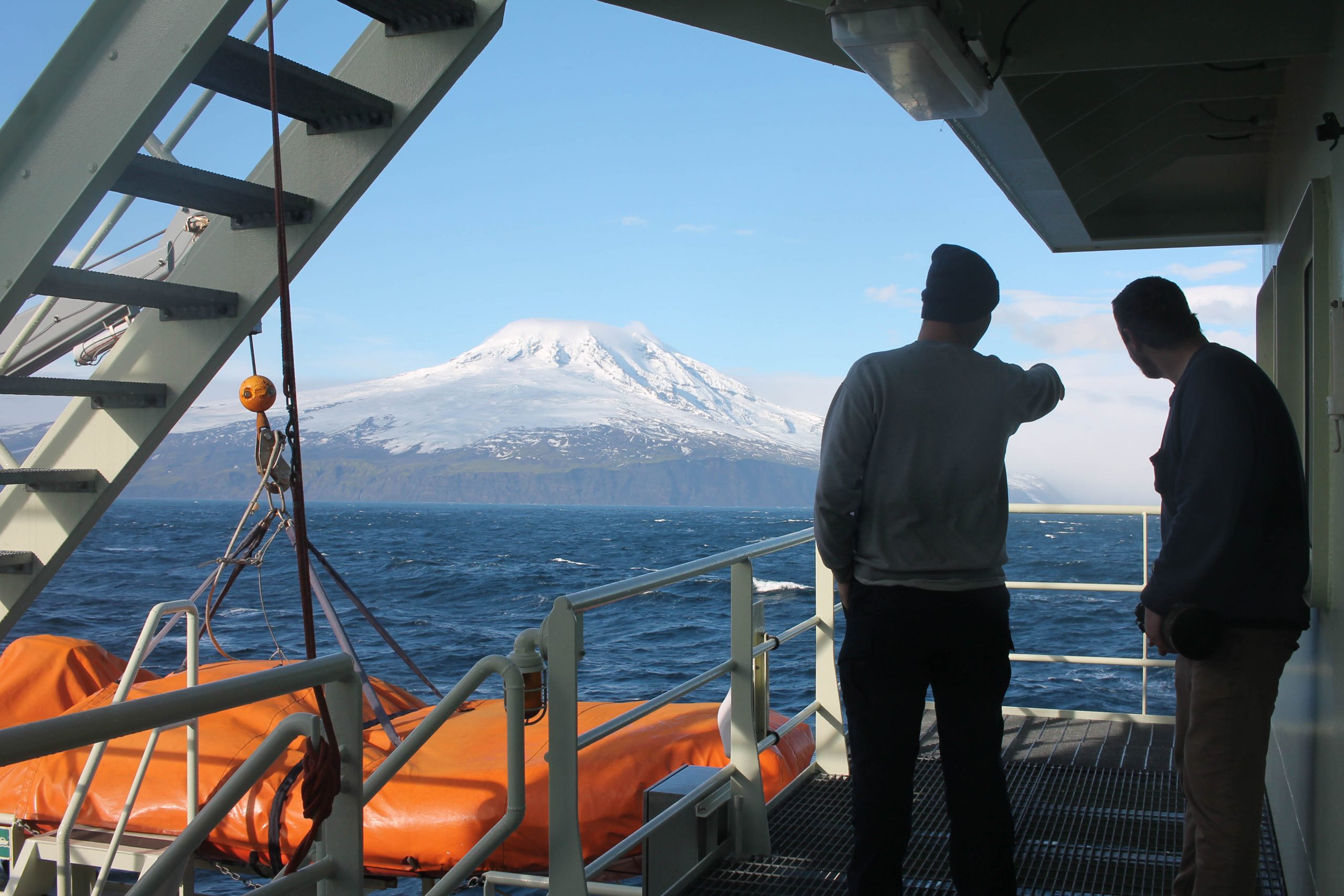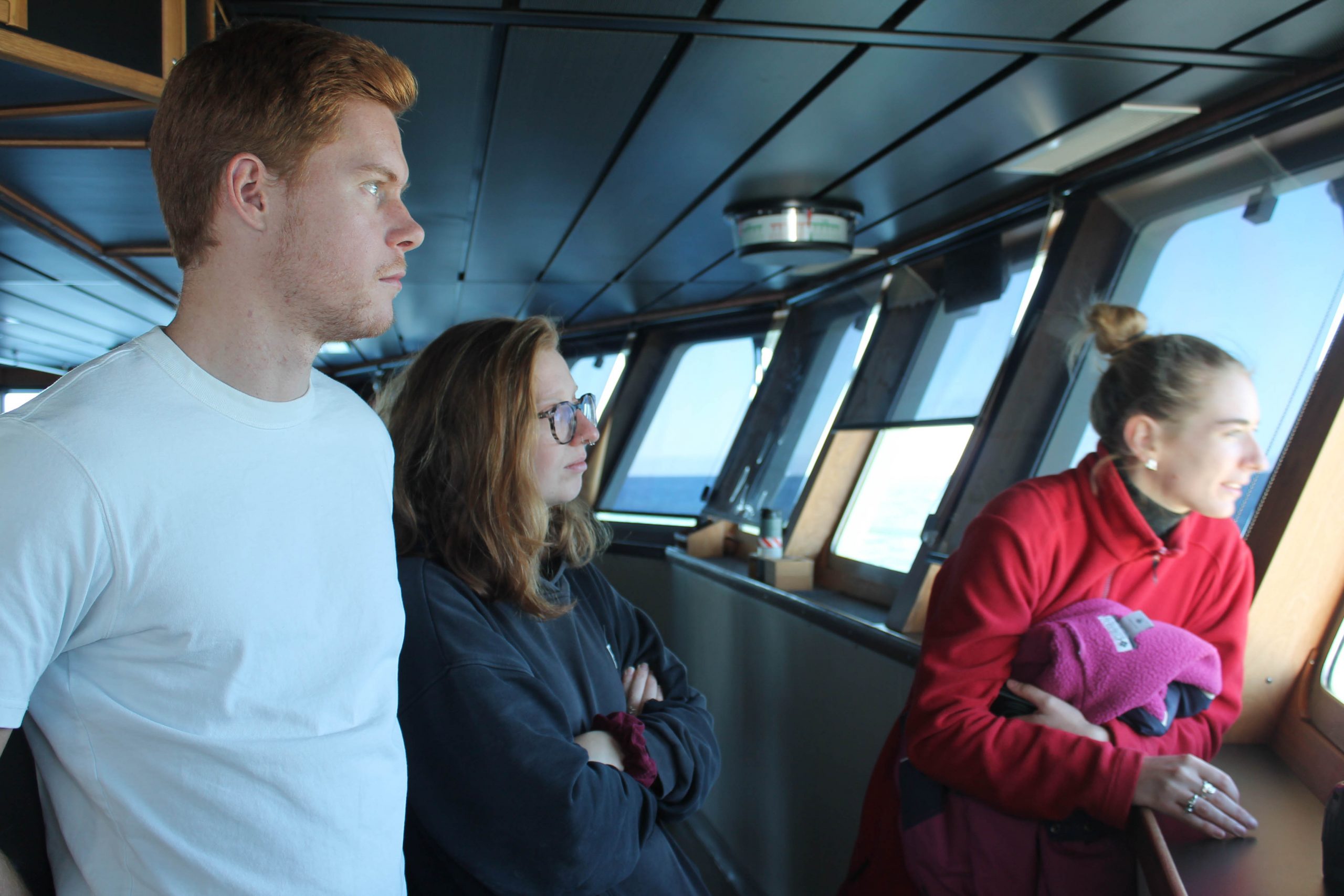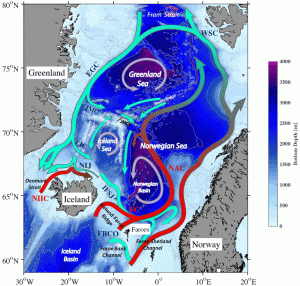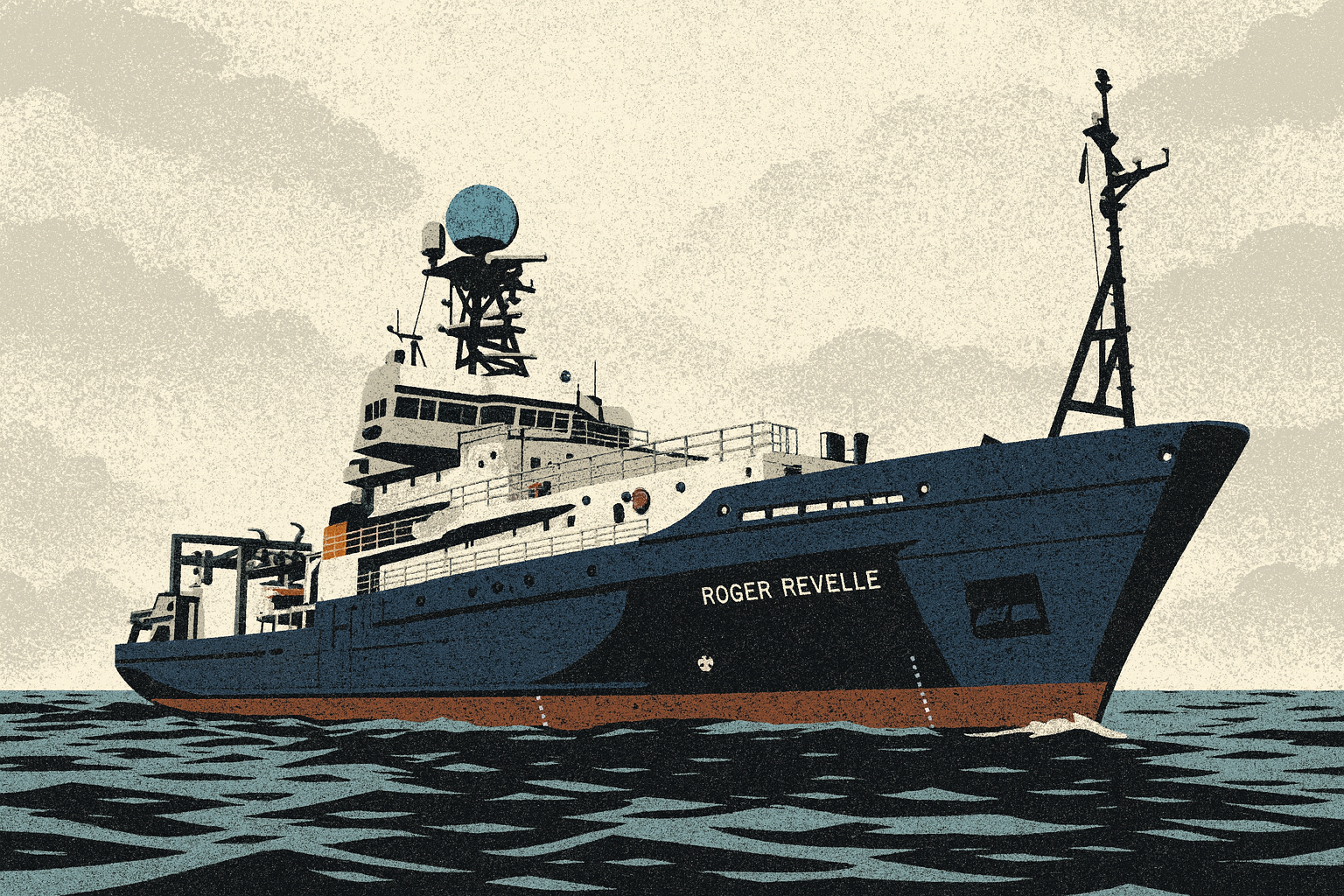Upstream Pathways of the Faroe Overflow (UFO)
UFO is multi-institutional, interdisciplinary effort to study the origin and pathways of the dense water that feeds the Faroe Bank Channel overflow.



CURRENT NEWS

Schematic circulation of the Nordic Seas. The red arrows denote warm currents and the aqua arrows denote cold currents. The abbreviations are as follows: NAC, Norwegian Atlantic Current; WSC, West Spitsbergen Current; EGC, East Greenland Current; JMC, Jan Mayen Current; EIC, East Icelandic Current; NIIC, North Icelandic Irminger Current; NIJ, North Icelandic Jet; IFSJ, Iceland-Faroe Slope Jet; FC, Faroe Current; JMCh, Jan Mayen Channel.
The overflow of dense water across the Greenland-Scotland Ridge, and its subsequent entrainment, is a fundamental component of the Atlantic Meridional Overturning Circulation (AMOC) which helps maintain Earth’s climate. It is critically important to determine the mechanisms, forcing, and variability of the AMOC. The project entitled “Upstream Pathways of the Faroe Overflow” (UFO) is multi-institutional, interdisciplinary effort to study the origin and pathways of the dense water that feeds the Faroe Bank Channel overflow. This overflow is the densest component of the AMOC and accounts for a significant portion of the composite overflow across the Greenland-Scotland Ridge. The UFO program includes a mooring array, gliders, hydrographic surveys, and modeling. Together, this will help determine where the densest water is formed in the Nordic Seas, how this water progresses to the Greenland-Scotland Ridge, and how it is modified along the way including the role of atmospheric forcing. This in turn will provide a better understanding of the means by which the warming climate may impact the AMOC.
The different institutions participating in UFO are the Woods Hole Oceanographic Institution (WHOI), the Faroe Marine Research Institute (FAMRI), the University of Bergen (UiB) Norway, Norwegian Research Center (NORCE), and the Marine and Freshwater Research Institute of Iceland (MFRI).
Project PIs:
- Robert Pickart, WHOI
- Mike Spall, WHOI
- Karin Margretha Larsen, FAMRI
- Hjálmar Hátún, FAMRI
- Kjetil Våge, UiB
- Ilker Fer, UiB
- Andreas Macrander, MFRI
Project members:
- Jie Huang, WHOI postdoctoral investigator
- Stefanie Semper, UIB research scientist
- Leah McRaven, WHOI research specialist
- Ailin Brakstad, UiB research scientist
Project collaborators:
- Núria Casacuberta, ETH Zurich
- Margot White, ETH Zurich
